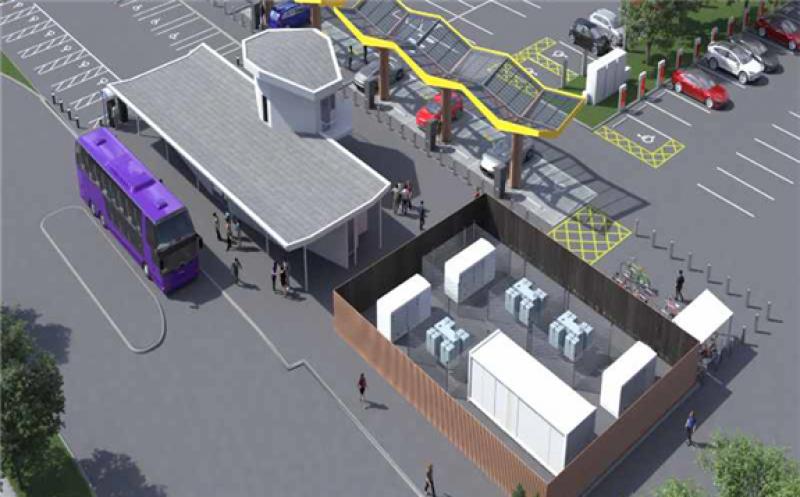As calls to speed up the electrification of the transport system intensifies to meet carbon emissions reduction goals, there is a need for more collaboration between energy and technology sector stakeholders to innovate solutions. Energy services and electric vehicles (EV) charging technology companies including Tesla and Wenea have partnered to develop what is being claimed to be the most powerful EV charging hub in Europe.

The superhub will be installed in the English city of Oxford following the city council’s partnership with Pivot Power, a subsidiary of EDF Renewables, Tesla Superchargers, ultra-fast EV charging solutions firm Fastned and Wenea.
As part of the £41 million ($57.9 million) project, the companies will install some 38 fast and ultra-rapid EV chargers at a single site at Redbridge Park & Ride. Fastned will initially install ten chargers at the Superhub with 300kW of power, capable of adding 300 miles of range in just 20 minutes for up to hundreds of EVs per day. Wenea will install sixteen 7-22kW charging points. Tesla will install twelve 250kW EV chargers. Fourteen EVs will be able to charge simultaneously at the site.
The chargers will be powered by 10MW of energy generation capacity to be installed onsite. The 10MW energy plant will directly be connected to the high voltage national electricity grid and will help ensure the charging of the EVs does not strain the main grid. Connection to National Grid’s high voltage transmission network will be enabled by a 50MW hybrid battery – the largest ever deployed using lithium-ion and vanadium flow technology.
The number of chargers is expected to be increased in line with changes in the adoption of EVs over the next 30 years. The site is the first of up to 40 similar sites planned across the UK to help deliver charging infrastructure needed for the estimated 36 million EVs by 2040.
The project is part of the Energy Superhub Oxford, a UK government-funded initiative that is designed to accelerate the rollout of EV infrastructure and to eliminate 10,000 tonnes of CO2 emissions a year as from 2021, the equivalent of taking 2,000 cars off the road. The government, through UKRI, has contributed £10 million ($14.1 million) to the project via UKRI’s Prospering from the Energy Revolution programme.
The project is also part of Oxford’s launch of the UK’s first Zero Emission Zone this August, where vehicles are charged based on their emissions, with EVs able to use the zone for free. Oxford has plans to use the electrification of its transport system to reach zero carbon by 2040. The announcement follows three-quarters of local councils in the UK being declared climate emergencies yet very few have set out clear plans for how they will rapidly cut carbon emissions.
Matt Allen, CEO at Pivot Power, said: “Our goal is to help the UK accelerate net-zero by delivering power where it is needed to support the EV and renewable energy revolution. Oxford is one of 40 sites we are developing across the UK, combining up to 2GW of battery storage with high volume power connections for mass EV charging. Energy Superhub Oxford supports EDF’s plan to become Europe’s leading e-mobility energy company by 2023, and is a blueprint we want to replicate right across the country, working hand in hand with local communities to create cleaner, more sustainable cities where people want to live and work.”
Rob Saunders, Challenge Director, Prospering from the Energy Revolution, UKRI said: “Forward-thinking innovation in the energy space is key not only to change current energy use, but to plan for societies and industries that prosper in the future. The combination of benefits this project delivers – from storage and AI-powered flexibility services, to greener heating and vehicle charging – are exactly the kind of multipurpose solution that will help drive the UK forward as a leading net zero innovator. The Energy Superhub is also a great demonstration of what can be achieved with a commitment to collaboration, and bringing together different areas of expertise to tackle key issues for our energy future.”